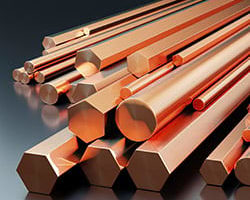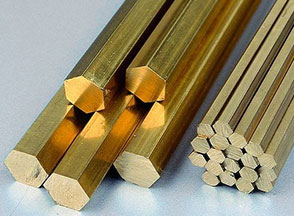ACR Copper Coil Tubing
Leave a CommentAir conditioning and refrigeration (ACR) copper tubing is commonly used in heating, ventilation, and air conditioning (HVAC) systems. It is utilized for transporting refrigerants — such as R-410A and R-22 — throughout the system to facilitate the cooling or refrigeration process. This tubing technique is preferred for its ability to efficiently conduct heat, which is crucial for effective ACR operation.
In this article, we will discuss the characteristics and applications of this copper coil tubing method. We will also look at the different types of ACR copper coils.
Unique Characteristics of ACR Copper Coils
The following characteristics make ACR copper coils the go-to materials for those seeking efficient and durable solutions for air conditioning and refrigeration systems:
Compatibility
ACR copper coils are renowned for compatibility with refrigerants commonly used in air conditioning and refrigeration systems. This ensures that the coils can accommodate various system designs and operating conditions. It also offers reliability and performance across diverse applications in commercial and industrial settings.
Corrosion Resistance
A defining trait of ACR copper coils is their excellent corrosion resistance. They retain their integrity over time, even when exposed to harsh environmental conditions or various refrigerants. This is essential in ensuring the longevity and reliability of the components, where exposure to moisture, chemicals, and other corrosive elements is common.
Formability
ACR copper coils exhibit excellent formability, allowing them to be easily bent, shaped, and installed to suit the specific requirements of diverse applications. This flexibility is invaluable in adapting the coils to intricate system designs and optimizing space utilization and system performance. Installers also benefit from the ease of working with these coils, which enables precise customization.
Thermal Conductivity
The high thermal conductivity of ACR copper coils allows for efficient heat transfer within the system. This facilitates rapid cooling or heating of the surrounding air or refrigerant. It also contributes to the overall energy efficiency of HVAC and refrigeration (HVACR) systems, ultimately reducing operational costs and environmental impact. Moreover, it ensures consistent temperature regulation throughout the system.
Applications of ACR Copper Coil Tubing
Aside from air conditioning systems and refrigeration units, here are the most common applications of this coil tubing technique:
- Agricultural cooling systems: The coils preserve harvested crops and maintain optimal conditions in agricultural storage facilities.
- Automotive air conditioning: ACR copper coils are incorporated into automotive HVAC systems to ensure reliable performance and comfort for passengers.
- Data center cooling: The coils help dissipate heat generated by servers and networking equipment, ensuring efficient operation and preventing overheating-related downtime.
- Food and beverage systems: ACR copper coils are used in commercial refrigerators, display cases, and dispensing systems to maintain optimal storage temperatures for perishable items.
- Medical and laboratory equipment: The coils are used in cooling units for storing vaccines, pharmaceuticals, and biological samples to ensure their integrity and efficacy.
- Renewable energy systems: The coils facilitate heat transfer between the ground and the indoor environment in geothermal heat pumps.
Types of ACR Copper Coil Tubing
The following types of ACR copper tubing offer distinct advantages and applications:
Standard ACR Copper Tubing
Standard ACR copper tubing is the most common type used in HVACR systems. It is available in various sizes and wall thicknesses to accommodate different configuration requirements. This tubing typically meets industry standards such as ASTM B280 and is suitable for general-purpose uses.
Soft Annealed ACR Copper Tubing
Soft annealed ACR copper tubing undergoes heat treatment to improve its malleability and ease of bending. This type is highly flexible and can be easily shaped by hand or with simple bending tools. It is preferred for applications requiring tight bends or intricate configurations.
Hard-Drawn ACR Copper Tubing
Hard-drawn ACR copper tubing is manufactured through a cold-drawing process, resulting in increased tensile strength and hardness compared to soft-annealed tubing. This tubing is more rigid and maintains its shape better when subjected to external forces or pressure.
Insulated ACR Copper Tubing
Insulated ACR copper tubing features a layer of insulation material wrapped around the copper tubing to prevent condensation and minimize heat transfer. This is commonly used for refrigerant lines running through unconditioned spaces or areas with fluctuating temperatures.
Choose Interstate Metal for High-Quality Metals
At Interstate Metal, Inc., we offer an array of metals engineered to deliver exceptional mechanical properties, guaranteeing reliability and durability across diverse applications! We also prioritize customer satisfaction by providing personalized services and expert guidance throughout selection and procurement. Moreover, our team is committed to providing comprehensive technical support and assistance.
Contact us today or request more information about our products and services!







 C110 is a form of copper with electrical and thermal conductivity characteristics.
C110 is a form of copper with electrical and thermal conductivity characteristics.